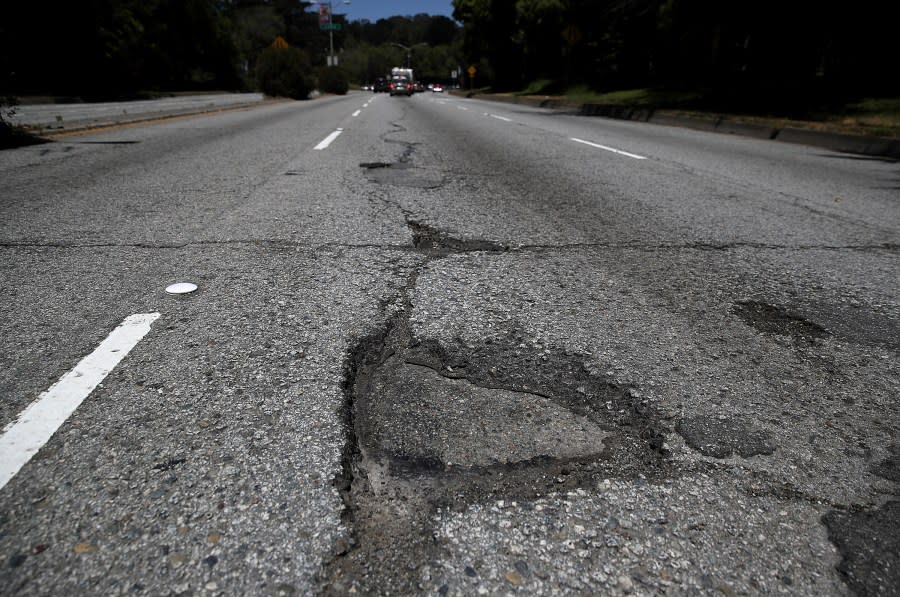California audit finds little oversight in state program to fund roadway projects

Above: A video by FOX 5/KUSI explaining why potholes form.
SAN DIEGO (FOX 5/KUSI) — Deteriorating roadways has become a prevailing topic in local discourse about public infrastructure.
Elected officials have long stated that cost is a primary barrier for maintaining their network of streets, but a state audit released on Thursday revealed a more complicated reality: One with little oversight to ensure cities and counties are making their own roadway investments.
The audit specifically found that the California State Controller — the state’s bookkeeper or accountant — does not examine whether cities and counties are meeting a requirement to use money from its own coffers in tandem with funds from a state program for road projects.
Rules of the Road: What regulations do commercial vehicles have to follow?
The program, called the “Local Streets and Roads Program,” was set up by a measure, Senate Bill 1, that was signed into law in 2017. SB 1 raised several existing taxes and fees to put towards a variety of transportation-related projects.
The measure came at a time when California was facing a $59 billion shortfall in funding to adequately maintain its highway system and localities were facing a $78 billion deficit for addressing their road networks.
According to the audit, the Local Streets and Roads Program is the second largest recipient of money from the tax changes in SB 1, receiving on average $1.5 billion each year. Cities and counties can use this money for various road maintenance and repair efforts.
Under the program, cities and counties are given a lot of latitude over what projects this money ultimately goes towards. The state auditor says this is to give flexibility to help fund efforts to meet emergent needs, like filing potholes after a storm.
One of the only requirements for municipalities to receive this funding is that officials must maintain a minimum local level of spending on their roadways, referred to as a “maintenance-of-effort” requirement. If a city or county doesn’t meet the standard, the State Controller is supposed to withhold program funding for future fiscal years until they rectify the issue.
That’s where the issue observed by the auditor comes in: The controller has not held cities accountable for meeting this requirement to receive state funds from the Local Streets and Roads Program.
SANDAG vows steps to improve transparency, accountability after SR-125 toll road audit report
“This requirement helps to ensure that cities and counties do not replace their local spending on streets and roads with funding from the program,” the state auditor wrote in the report. “Although the State Controller performed reviews of cities and counties and identified instances of potential noncompliance, it did not take additional steps to enforce state law.”
“This is problematic because without the State Controller conducting audits and withholding funding, cities or counties may evade their responsibility for maintaining local spending on streets and roads,” the auditor continued.
Using reviews by the controller for the 2020-21 fiscal year, the auditor found that all cities underspent by $10.7 million, or about one percent of the nearly $950 million cities were required to meet the maintenance-of-effort requirement for that fiscal year.
Only 168 notices of potential noncompliance were sent by the State Controller to cities and counties across the five-year span between 2017 and 2022 — about 20 cities getting the same warning two times in a row. But state officials have not withheld any funds from localities it suspects are not meeting their fair share.
Part of the problem, the auditor says, is that cities and counties realistically only have about a month to fix their spending levels to meet the maintenance-of-effort requirement, and they are already struggling to pull together enough funding just to keep road conditions at current levels.
Some areas the audit looked at have found additional funding sources for street repair, such as sales taxes or bond measures. This includes Oakland, which was the only city of the six specifically reviewed by the auditor that saw an uptick in its pavement road condition index score.
Can you park there? What different curb colors mean in city of San Diego
Overall though, road conditions are continuing to deteriorate by a rate of about 10 percent each year and without dedicated funding from local sources to supplement the state money it is receiving, the audit says it will be difficult to reverse this trend.
“Despite the State’s significant investment through the program, street conditions in these cities continues to decline, in part, because of inadequate financial resources,” the audit read.
The audit recommends California extend the required time to fix issues with the maintenance-of-effort requirement to two fiscal years and to change the withholding requirement, should localities not meet their share, to the amount in which they fell short — not the full sum.
This, the auditor says, would create an “appropriate remedy” to ensure cities and counties are complying with the law while also preserving the intent of SB 1 — opening up funding to aid localities in fixing their roadways.
For the latest news, weather, sports, and streaming video, head to FOX 5 San Diego & KUSI News.

